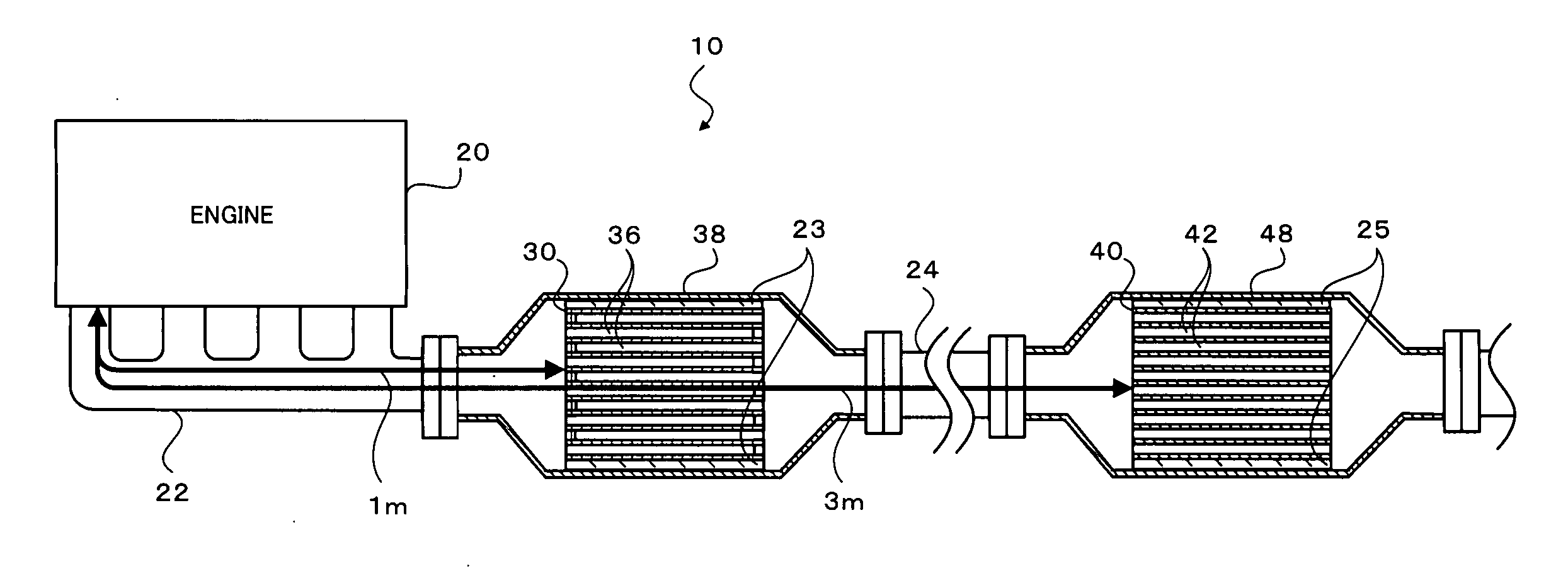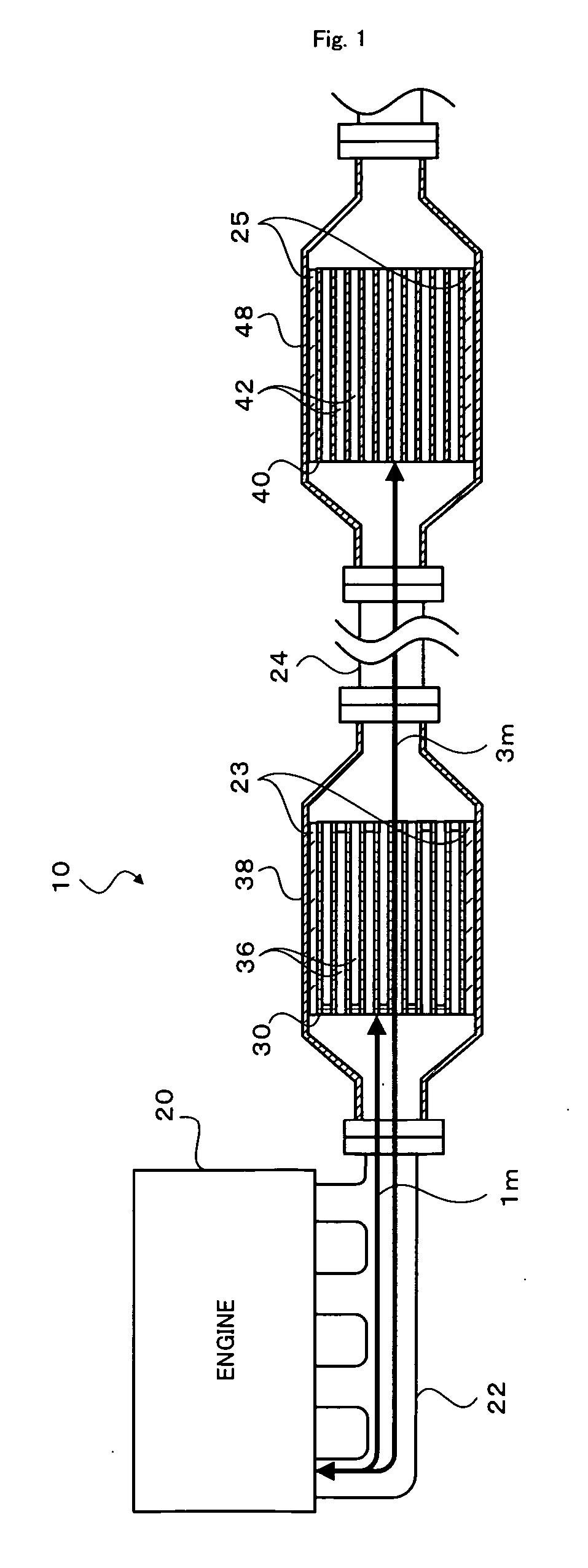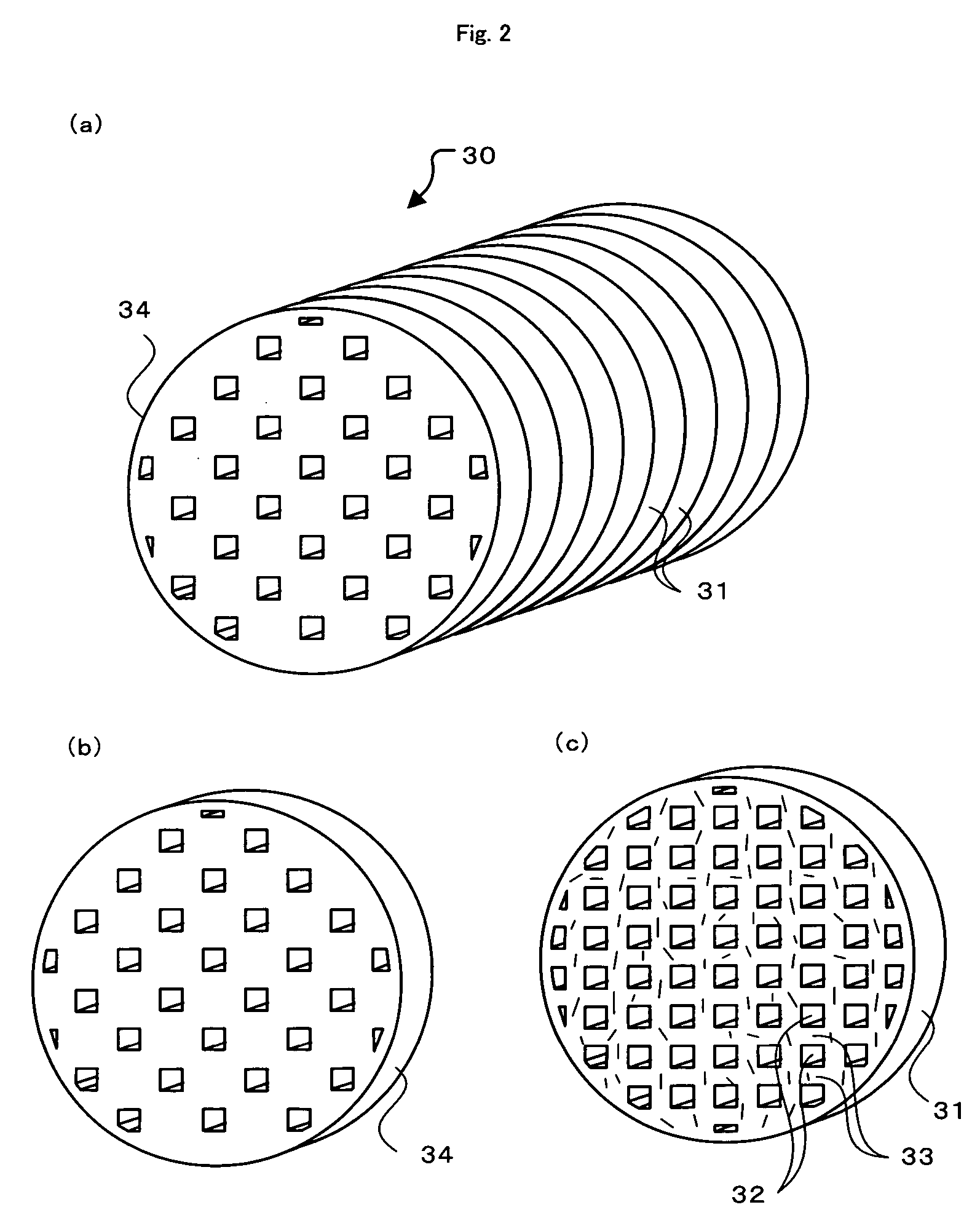Exhaust gas cleanup system
a technology of exhaust gas and cleaning system, which is applied in the direction of machines/engines, metal/metal-oxide/metal-hydroxide catalysts, chemical/physical processes, etc., can solve the problem of easy burning of trapped particulate materials, increase the strength against thermal shock or vibration, and reduce the heat stress applied to each honeycomb unit. , the effect of preventing the increase of pressure loss
- Summary
- Abstract
- Description
- Claims
- Application Information
AI Technical Summary
Benefits of technology
Problems solved by technology
Method used
Image
Examples
example 1
[0069] Hereinafter, an example (example 1) of an exhaust gas cleanup system 10 using the honeycomb filter 30 and the honeycomb structure 40 is described.
[0070] Method for Manufacturing a Honeycomb Filter 30 (DPF-A)
[0071] A honeycomb filter 30 that contains alumina fibers (average diameter: 5 μm, average length: 300 μm) as inorganic fibers was manufactured. Alumina fibers were dispersed in the proportion of 10 g to 1 L of water, silica sol was added in the proportion of 5 weight percent to alumina fibers, an acryl resin was added in the proportion of 3 weight percent, and furthermore, small amounts of aluminum sulfate and polyacrylamide were added and sufficiently stirred, whereby a papermaking slurry was prepared. This papermaking slurry was screened through a perforated mesh having square holes formed at predetermined intervals, and then the obtained article was dried at 150° C., whereby a sheet-like member 31 was obtained which had a diameter of 143.8 mm, a thickness of 1 mm, th...
example 2
[0078] Next, an example (example 2) of an exhaust gas cleanup system 10 using the honeycomb filter 130 and the honeycomb structure 140 is described.
[0079] Method for Manufacturing Honeycomb Filter 130 (DPF-B)
[0080] 7000 parts by weight of α-type silicon carbide powder (average particle diameter: 10 μm), 3000 parts by weight of α-type silicon carbide powder (average particle diameter: 0.5 μm), 1000 parts by weight of acryl particles as a pore forming agent, and 3700 parts by weight of water were mixed, and furthermore, 2000 parts by weight of methylcellulose as an organic binder, 300 parts by weight of glycerin as a plasticizer, and 660 parts by weight of a lubricant (product name: UNILUB made by NOF Corporation) were added and kneaded, whereby a green body was obtained. This green body was extruded into a rectangular column shape having a plurality of through holes arranged side by side in the longitudinal direction to obtain a raw molding. Next, the obtained raw molding was dried...
examples 3 , 6
Examples 3, 6, and 9
[0085] In the examples 3, 6, and 9, the same DPF-A and NSC-D as those of the example 1 were used. In the example 3, a DPF-A sample was disposed at a position of 1 m in length from the engine 20, and a NSC-D sample was disposed at a position of 1.2 m in length from the engine 20. In the example 6, a NSC-D was disposed at a position of 3 m in length from the engine 20, and a DPF-A was disposed at a position of 3.2 m in length from the engine 20. In the example 9, a DPF-A sample was disposed at a position of 3 m in length from the engine 20, and an NSC-D sample was disposed at a position of 3.2 m in length from the engine 20.
PUM
| Property | Measurement | Unit |
|---|---|---|
| path length | aaaaa | aaaaa |
| porosity | aaaaa | aaaaa |
| path length | aaaaa | aaaaa |
Abstract
Description
Claims
Application Information
 Login to View More
Login to View More - R&D
- Intellectual Property
- Life Sciences
- Materials
- Tech Scout
- Unparalleled Data Quality
- Higher Quality Content
- 60% Fewer Hallucinations
Browse by: Latest US Patents, China's latest patents, Technical Efficacy Thesaurus, Application Domain, Technology Topic, Popular Technical Reports.
© 2025 PatSnap. All rights reserved.Legal|Privacy policy|Modern Slavery Act Transparency Statement|Sitemap|About US| Contact US: help@patsnap.com



